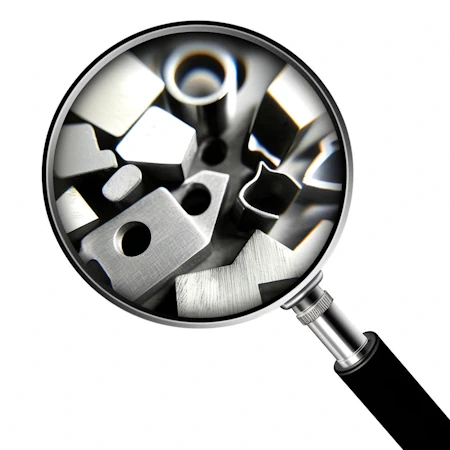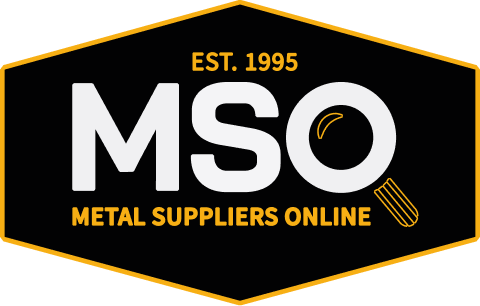Back To Browse
Titanium
Titanium 6Al-6V-2Sn
Aging Procedure
Age at 538-621 C(1000-1150 F) for 4-8 hours and air cool.
Annealing Procedure
Hold at 704 C(1300 F) for 2 hours, air cool. For stress relieving, hold at 593 C(1100 F) for 2 hours and air cool.
Applications
Used primarily in plate and forging applications for airframe sections, rocket cases and ordnance components.
Cold Workability
The cold working characteristics of this material are similar to those of austenitic stainless steels. In multiple forming operations, intermediate stress relieving is recommended to offset the alloy's tendency to work harden. Post-work annealing is required to re-attain optimum performance characteristics.
Forgeability
Rough at 932 C(1710 F), finish at 843 C(1550 F).
Formability
This alloy may be hot or cold formed. Popular methods include hydropress, stretch or drop-hammer. This material responds similarly to 300 series stainless steels.
Heat Treatability
Solution treat at 843-913 C(1550-1675 F) for 1 hour and water cool.
Hot Workability
Hot forming will reduce both the springback and required forming forces, and will increase the overall ductility of the material.
Machinability
As a family, titanium and its alloys have developed a mystique as a nightmare to machine. This is simply not the case. Experienced operators have compared its characteristics to those found in 316 stainless steel. Recommended practice includes high coolant flow(to offset the material's low thermal conductivity), slow speeds and relatively high feed rates. Tooling should be tungsten carbide designations C1-C4 or cobalt type high speed tools.
Other Physical Properties
Beta Transus (F +/- 25) 1735
Principle Design Features
This alpha-beta alloy can be heat treated to higher strengths and heavier section sizes than alloy 6AL-4V. It combines excellent strength, corrosion resistance and moderately good fabricability. Beta Transus (F +/- 25) 1735.
Weldability
Beta Transus (F +/- 25) 1735
Known Forms
Bar-Hollow
Closed Die Forgings
Flanges
Flat Bar
Forgings-Discs
Hexagon Bar
Open Die Forgings
Pipe-Seamless
Pipe-Welded
Plate
Rings
Round Bar
Seamless Rolled Rings
Sheet
Sheet-Perforated
Square Bar
Strip
Tube-Round (Seamless)
Tube-Round (Welded)
Wire-Round
Wire-Welding
Billet
Coil
Contour Rings
Fasteners
Fittings
Forgings-Upset
Mandrel Rings
Shafts
Shapes-CD
Shapes-Extruded
Shapes-HR
Welded Rings
Additional Data
Specifications
4918,4936,4971,4978,4979,1870,1887,F-83142,T-81556,T-9046,T-9047,R56620Dismiss
Chemical Elements
| Aluminum | 5 - 6 |
| Carbon | 0.05 max |
| Copper | 0.35 - 1 |
| Hydrogen 2 | 0.015 max |
| Iron | 0.35 - 1 |
| Nitrogen | 0.04 max |
| Oxygen | 0.2 max |
| Tin | 1.5 - 2.5 |
| Titanium | Balance |
| Vanadium | 5 - 6 |
Physical Properties
Density: 0.164lb/in³
Electrical Resistivity: 157µΩ·cm
Melting Point: 3100°F
Specific Heat: 0.155BTU/lb·°F
Thermal Conductivity: 0.35BTU/hr·ft·°F
Mechanical Properties
Modulus of Elasticity – Tension: 16.5MSI
Reduction of Area: 20%
Thermal Expansion
| Condition | Min | Max | Expansion Coefficient |
|---|---|---|---|
| Annealed | 32 °F | 212 °F | 5 µin/in/°F |
| Annealed | 32 °F | 600 °F | 5.2 µin/in/°F |
| Annealed | 32 °F | 1000 °F | 5.3 µin/in/°F |
Mechanical Test Data
| Form | Sheet |
| Condition | Solution Annealed & Aged |
| Measurement Temperature | 70°F |
| Elongation | 10% |
| Reduction of Area | 20% |
| Tensile Strength | 150KSI |
| Yield Strength | 140KSI |
| Form | Sheet |
| Condition | Test Specimen Annealed |
| Measurement Temperature | 70°F |
| Form | Sheet |
| Condition | Test Specimen Annealed |
| Measurement Temperature | 400°F |
| Tensile Strength | 145KSI |
| Yield Strength | 127KSI |
| Form | Sheet |
| Condition | Test Specimen Annealed |
| Measurement Temperature | 600°F |
| Tensile Strength | 135KSI |
| Yield Strength | 117KSI |
Find the metal you're looking for today.

